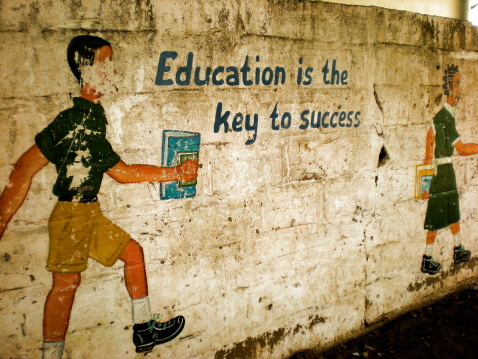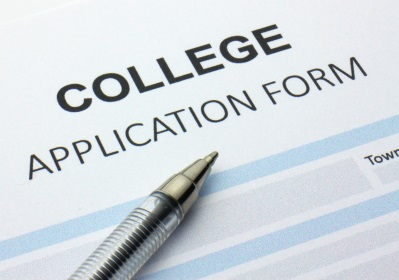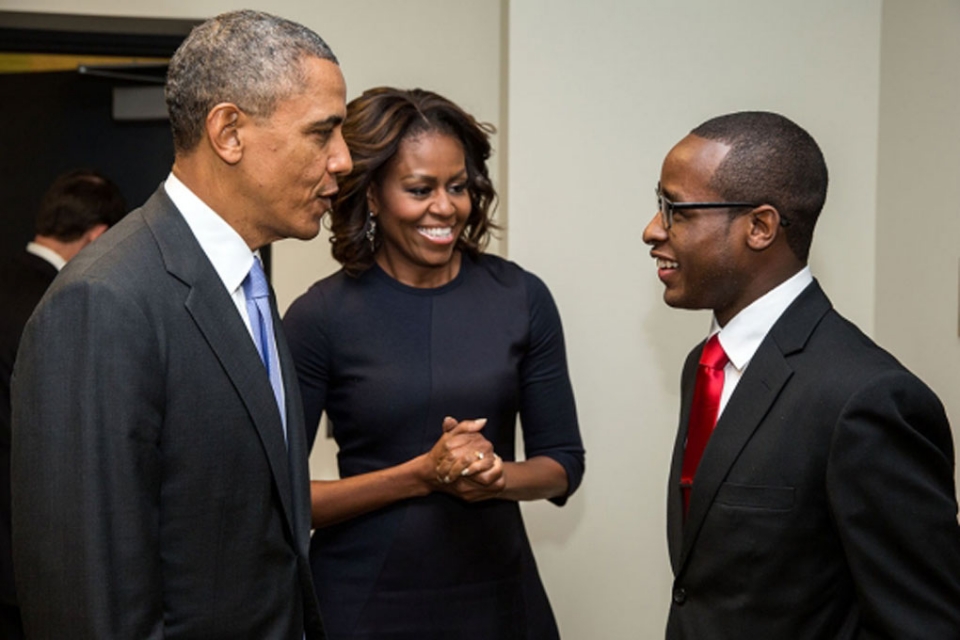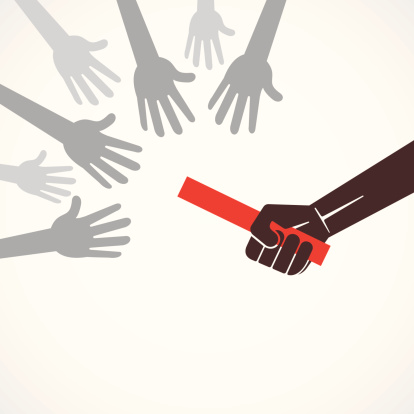Laura Tucker
Despite approximately 57% of undergraduates having received some sort of federal aid to attend university in 2012, 10% up compared to four years ago, the issue of access to higher education for low-income students in the US remains a hot topic.
President Obama and first lady Michelle Obama are prioritizing the affordability of and access to higher education and, with a vision of more and more low-income students enrolling in – and graduating from – US colleges.
This government ambition aims at motivating colleges across the US to focus on improving the accessibility of their courses and programs, and also making sure all high school graduates with the academic potential to go on to college are aware of their options.
College as the key to ‘social mobility’ for low-income Students
Going to university is consistently marketed as the key to success in life, and a means to achieving social mobility. To improve your social standing, employment options and salary expectations, a college education is often considered a necessity. Although this may not seem like a problem, it may certainly feel like one for young people who simply can’t afford to go to college? Getting a good job and earning a decent wage are two things that might appeal to low-income students, but the overall message is unlikely to be an inspiring one.
 This is the central argument of a recent article on TheAtlantic.com, which points out that students of low-income backgrounds are constantly being told that college is the key to financial independence and a better life. What is unhelpful about this, the article suggests, is that low-income students are rarely encouraged to pursue degrees based on what really inspires them and will expand their minds, along with their ability to make a difference to society later on in life.
This is the central argument of a recent article on TheAtlantic.com, which points out that students of low-income backgrounds are constantly being told that college is the key to financial independence and a better life. What is unhelpful about this, the article suggests, is that low-income students are rarely encouraged to pursue degrees based on what really inspires them and will expand their minds, along with their ability to make a difference to society later on in life.
The future prospect of earning a good wage is often not enough for low-income students to justify the accumulation of huge burdens of debt in the meantime. Without the privilege of being able to forget about money when considering higher education, low-income students often prioritize their current monetary needs instead of their intellectual needs, which is stopping them from reaching their full potential academically as well as within society. And, despite the efforts of the White House and many individual institutions, it may be a while before this restriction of money becomes a thing of the past.
As Molly Corbett Broad, president of the American Council on Education put it: “There are some families where the cost of your application fee is a serious question around the family dinner table. These are real factors why some academically qualified students never go to college.”
Money problems for institutions as well as students
Lack of funding is not only an issue for students. For universities, enrolling a diverse student body is expensive. Following numerous funding cuts, many US universities are raising their tuition fee levels and reducing their student intake out of necessity. Squeezed resources mean there’s a danger that low-income students will be overlooked in favor of those students who are of lower risk and cheaper to take on.
The majority of schools are active promoters of integration and diversity within their student communities, with policies and strategies in place to support racial equality, gender equality and all-round inclusivity. However, these initiatives can often completely ignore the underlying problem of socioeconomic inequality and how this restricts access to higher education.
Richard Kahlenberg, education scholar at the Century Foundation, explained the situation to NPR. “The dirty little secret of American higher education is that universities care about racial diversity and do a good job of trying to promote that, but they completely ignore the issue of socioeconomic diversity. There’s very little incentive for universities to address a lack of economic diversity. Racial diversity is much more visible, and socioeconomic diversity is much more expensive to address because you have to provide financial aid.”
Not just about the money
Lack of funds isn’t the only thing holding low-income students back from applying to college. Often, they are also first-generation students from non-collegial family backgrounds, meaning that the application process is a lot more daunting as support from experienced family members is limited.
 For those low-income students whose parents didn’t go to college, the task of working through financial aid forms and applications, finding the right school and getting recommendations all months in advance can be overwhelming, and ultimately leads to these students missing out on many opportunities. Many students also have no idea that they have a chance of getting into an elite college – and that they could receive financial support to help.
For those low-income students whose parents didn’t go to college, the task of working through financial aid forms and applications, finding the right school and getting recommendations all months in advance can be overwhelming, and ultimately leads to these students missing out on many opportunities. Many students also have no idea that they have a chance of getting into an elite college – and that they could receive financial support to help.
College counselor at Noble’s Pritzker College Prep, Caroline Kelly, says that the challenges faced can be categorized into five different “buckets”. “One is financial, one is motivation, one is family, one is academics, and one is social integration.”
Getting low-income students to graduate
 Another hurdle, once the initial one of enrolled has been jumped, is to make sure that these students graduate. The job of improving access to higher education is not complete until the dropout rate of low-income students is equal to or better than the national average.
Another hurdle, once the initial one of enrolled has been jumped, is to make sure that these students graduate. The job of improving access to higher education is not complete until the dropout rate of low-income students is equal to or better than the national average.
According to studies, low-income and first-generation students are far less likely to have gained AP credit and more likely to be required to take uncredited classes to stay on track. They are also more likely to live off-campus or at home, which typically means they have reduced access to support within student services and the college network of students and staff.
Fortunately a growing number of schemes are cropping up to support these students all the way through to graduation. The most prominent of these is the Posse Foundation, a leading not-for-profit organization dedicated to not only recognizing talent and ambition in students from urban backgrounds but also supporting them within their chosen university to make sure they graduate.
What else is happening to change things?
On 16 January 2014, at a White House summit for higher education, President Obama launched an official national campaign to make college education more affordable and more accessible.
 The summit was attended by over 140 leaders of colleges and universities, organizations and businesses, who were urged by the president to do more for the cause. The encouraged initiatives included: connecting more low-income students to the right colleges, increasing the pool of prospective college students early on in high school, levelling the playing field for college entrance test preparation and strengthening remediation to enable under-prepared students to complete college.
The summit was attended by over 140 leaders of colleges and universities, organizations and businesses, who were urged by the president to do more for the cause. The encouraged initiatives included: connecting more low-income students to the right colleges, increasing the pool of prospective college students early on in high school, levelling the playing field for college entrance test preparation and strengthening remediation to enable under-prepared students to complete college.
In response to this, ten colleges and universities pledged to provide US$70 million in merit-based scholarships over the next five years to 500 urban undergraduate students focused on degrees in the STEM subjects (science, technology, engineering and mathematics). The pledge came as part of a partnership with the Posse Foundation, an organization the president himself is a sponsor of.
The summit prompted three new schools to join the partnership and the scholarship pledge, including Georgetown University, Smith College and Davidson College. These new partners join with existing supporters Brandeis University, Texas A&M University, University of Wisconsin-Madison, Pomona College, Middlebury College, Franklin & Marshall College and Bryn Mawr College.
As well as pledging a scholarship fund, these schools will also recruit ‘posses’ within their schools to support their urban low-income students. This scheme has proved successful so far, boasting a 90% persistence and graduation rate, much higher than the national average.
During the summit President Obama said: “We want to restore the essential promise of opportunity and upward mobility that’s at the heart of America, the notion that if you work hard, you can get ahead, you can improve your situation in life, you can make something of yourself.”
Other initiatives supporting access to higher education
 The OneGoal program is a teacher-led college persistence organization that works with high schools in Chicago and Houston to help students realize their potential and go on to college. It is the only teacher-led operation of its kind in the nation and aims to expand outwards in the coming years.
The OneGoal program is a teacher-led college persistence organization that works with high schools in Chicago and Houston to help students realize their potential and go on to college. It is the only teacher-led operation of its kind in the nation and aims to expand outwards in the coming years.
Darrell Williams, chairman of the OneGoal board of directors in Chicago says, “I am completely convinced that OneGoal’s work is transforming education, leading to the day when all high school students who recognize the life-changing value of a college degree are able to acquire that degree.”
QuestBridge is another not-for-profit organization helping connect bright students from low-income families with leading universities. “For low-income individuals, QuestBridge can alleviate the stress that comes from financial issues such as fees for applications and more,” says Vincente Perez, current student of the University of Chicago and 2011 National College match recipient. “Furthermore, QuestBridge allows students to highlight achievements that some people brush over, such as overcoming financial problems like divorce and homelessness.”
Can more be done to support access to higher education in the US? Share your opinion in the comments below.
